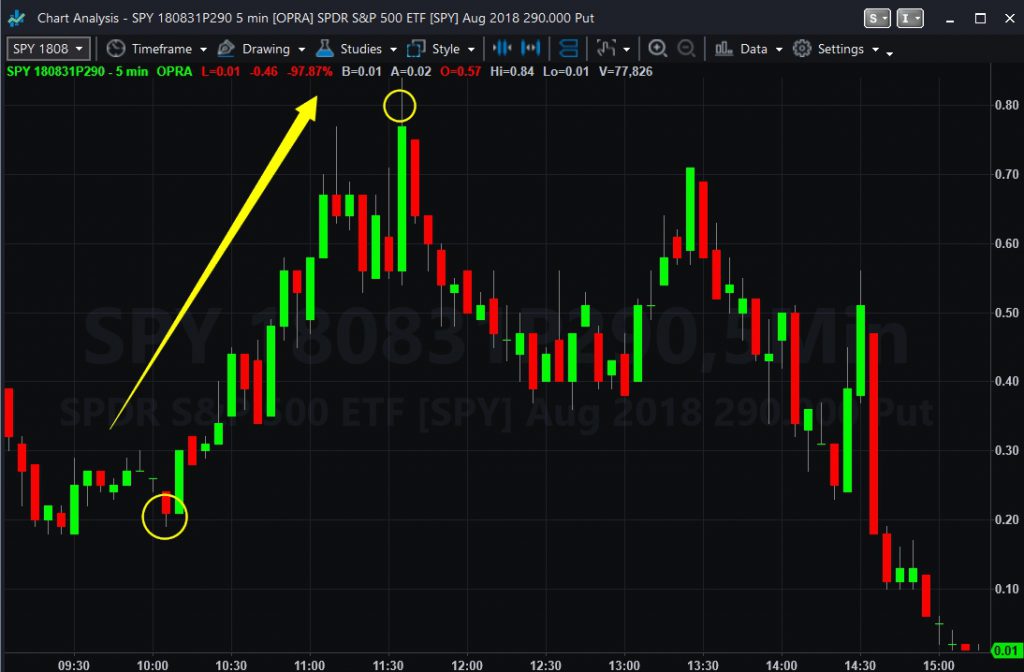The ancient Greeks were pretty smart. They gave us the Olympics, philosophy and medicine. But my favorite invention of theirs right now is Gamma.
In case you haven’t been following our Greek of the Week series on Market Insights, gamma is one of the key variables determining the price of options. It’s literally the “leverage on leverage.”
Want to learn more about options? Sign up for our “Options Stars 2018” symposium in Chicago this month.
Here’s an example of how it worked. Friday morning, the SPDR S&P 500 ETF (SPY) inched lower and then rallied back to a support level from the previous session around $290.80. At that moment, SPY’s weekly 290 puts expiring the same afternoon were offered for about $0.20.
SPY then proceeded to stall and decline about $1.40 and those puts shot up to $0.80. That’s right, they tripled in value from the underlying moving less than half a percent. Archimedes would be proud.
The reason is a combination of gamma and delta. Remember that delta shows how much an option can appreciate from a move in its underlying. Gamma is even cooler because it says how much delta will increase. (Gamma is highest just out of the money.) As we’ve discussed on Market Action and shown with Microsoft (MSFT), mixing these two Greek letters can yield a seriously powerful cocktail.
Study them carefully on Option Station Pro and you may learn to manage risk in a way you might have never imagined. Suddenly much less capital may be needed to profit from swings in the market.

For instance, say a client bought 20 contracts of those SPY puts for $0.20 and sold them for $0.80. They’d pay $400 and get back $1,600, a profit of $1,200.
Now compare that to CME’s S&P 500 E-mini futures (@ES). A trader short one contract at the same moment who rode the index’s corresponding 14-point decline would make just $700 in profit. (Remember SPY is one-tenth of @ES, and each point of @ES earns $50.)
And, unlike the options trader, the E-mini guy would have needed $5,800 in margin just to enter his position. That’s more than 14 times the amount of capital to earn barely half as much profit.
Of course, opportunities like this don’t come along every day. And options have other drawbacks like time decay. But they show that, when used correctly, gamma trades can offer the potential for significant leverage with very limited capital at risk.
Yes, there are reasons why we love options.























